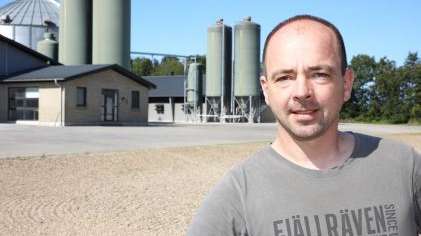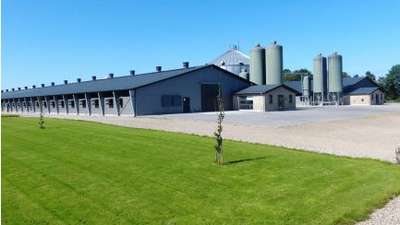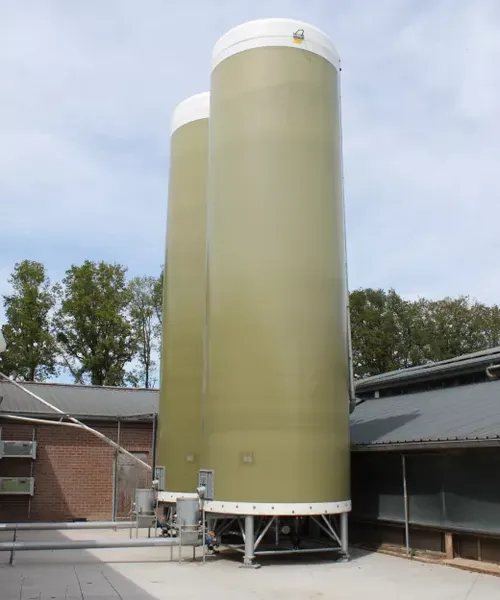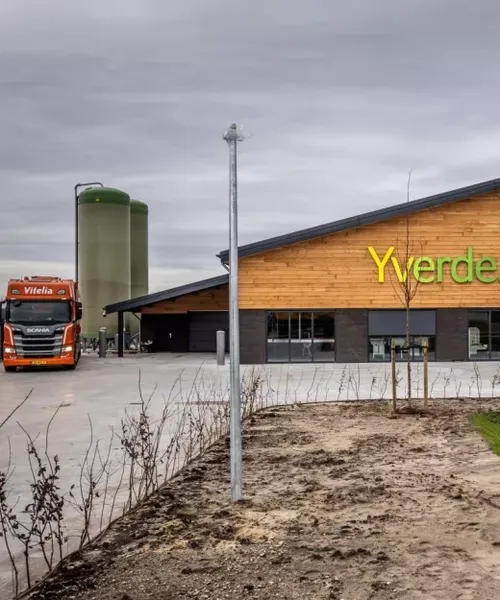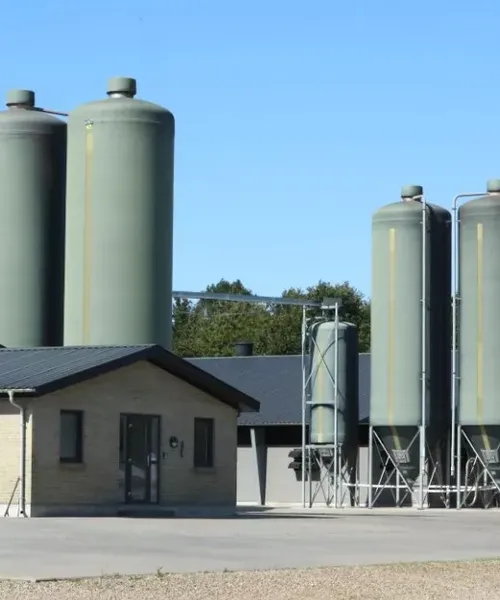6 feed silos for broiler farm in Denmark
6 silos, 110,000 chicks, 1 smart system: how Williamsborg combined efficiency and feed quality in their poultry operation
In the heart of Denmark lies the Williamsborg estate, an agricultural powerhouse that under the leadership of manager Rune Thomsen has undergone an impressive transition. With 110,000 broiler chickens and more than 1,000 hectares of farmland, efficiency here is not a choice, but a necessity. In 2015, an ambitious journey began with the purchase of an outdated pig farm. What followed was a metamorphosis that led to modern broiler houses and a smart feeding system.
Challenges and analysis
The challenge? Realizing efficient feed logistics for 110,000 chicks, without compromising on hygiene or flexibility. The existing infrastructure of the old pig farm did not meet the requirements for a modern broiler operation. Moreover, the team wanted to use their own grown wheat as a feed component, without the complexity of separate installations.
Solution and implementation
The choice was made to install six feed silos: four of 60 m³ for standard compound feed and two of 13 m³ for wheat buffer storage. These smaller silos are automatically refilled from the larger storage and mix the own wheat with factory feed. Thanks to sensors at the top and bottom, the silos are fully automated. A practical advantage: the silos are easy to clean, essential during incidents such as a recent salmonella outbreak.
Very satisfied! We experience no problems with the silos. They are also easy to clean, which was recently necessary due to a salmonella case.- Rune Thomsen, manager Williamsborg
Results
The new feeding system means for Williamsborg:
- Better utilization of own raw materials through wheat buffer storage.
- Complete automation of the filling process, with fewer labor hours.
- High hygiene standards, thanks to the easily cleanable design.
- Less waste and more efficient feed distributionthrough smart sensors.
The chickens also benefit. Through the stable feed flow and controlled environment, the business grows more predictably and profitably.
Lessons learned
An important lesson: invest directly in quality. The robust silos and automation provide peace of mind and flexibility. The combination of own raw materials and factory feed only works if the system is reliable and hygienic. The fact that cleaning could be carried out easily after a salmonella case underscores the importance of good design.
Conclusion
Williamsborg is ready for the future. With a thoughtful feeding system that combines autonomy, efficiency, and hygiene, the Danish company proves that modern poultry farming starts with smart choices in infrastructure. Their six silos are not just steel giants: they are keys to control, quality, and growth.
FAQ
- Why were different sized silos chosen? The larger 60 m³ silos serve for standard compound feed, while the smaller 13 m³ ones are used as buffer storage for own wheat. This provides maximum flexibility when mixing different feed types.
- How are the silos filled?Thanks to sensors, the smaller silos are automatically refilled from the larger storage. This minimizes manual labor and prevents silos from unexpectedly running empty.
- What happened during the salmonella incident? Quick action was taken with thorough cleaning of the silos. The easy cleanability played a crucial role in quickly restarting production.
- What effect did the new system have on the chickens? The stable feed distribution causes less stress for the animals, contributing to uniform growth. This has both animal welfare and financial benefits.
- Is this system scalable for other operations? Absolutely. The system is modular and adaptable, so both small and large broiler farmers can benefit from this type of solution.
Contact
Curious what a smart feeding system could mean for your poultry operation? Contact our market specialist for a non-binding conversation.
